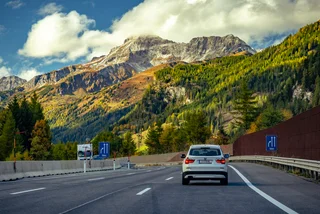Many notable buildings surround the Rynek, but two merit particular attention. Looming benignly over the square are the spiky towers of the red brick Mariacki (St. Mary’s parish church). At the top of any hour, stand in the Rynek, look up at the taller tower and listen carefully. You should hear, above the hubbub, a bugle call, sounding from it. The simple melody, known as the Hejnał, stops abruptly, giving rise to a legend that developed in the 20th century. According to the story, the bugler was warning of a Tatar invasion; he stopped suddenly when a Tatar arrow pierced his throat.


